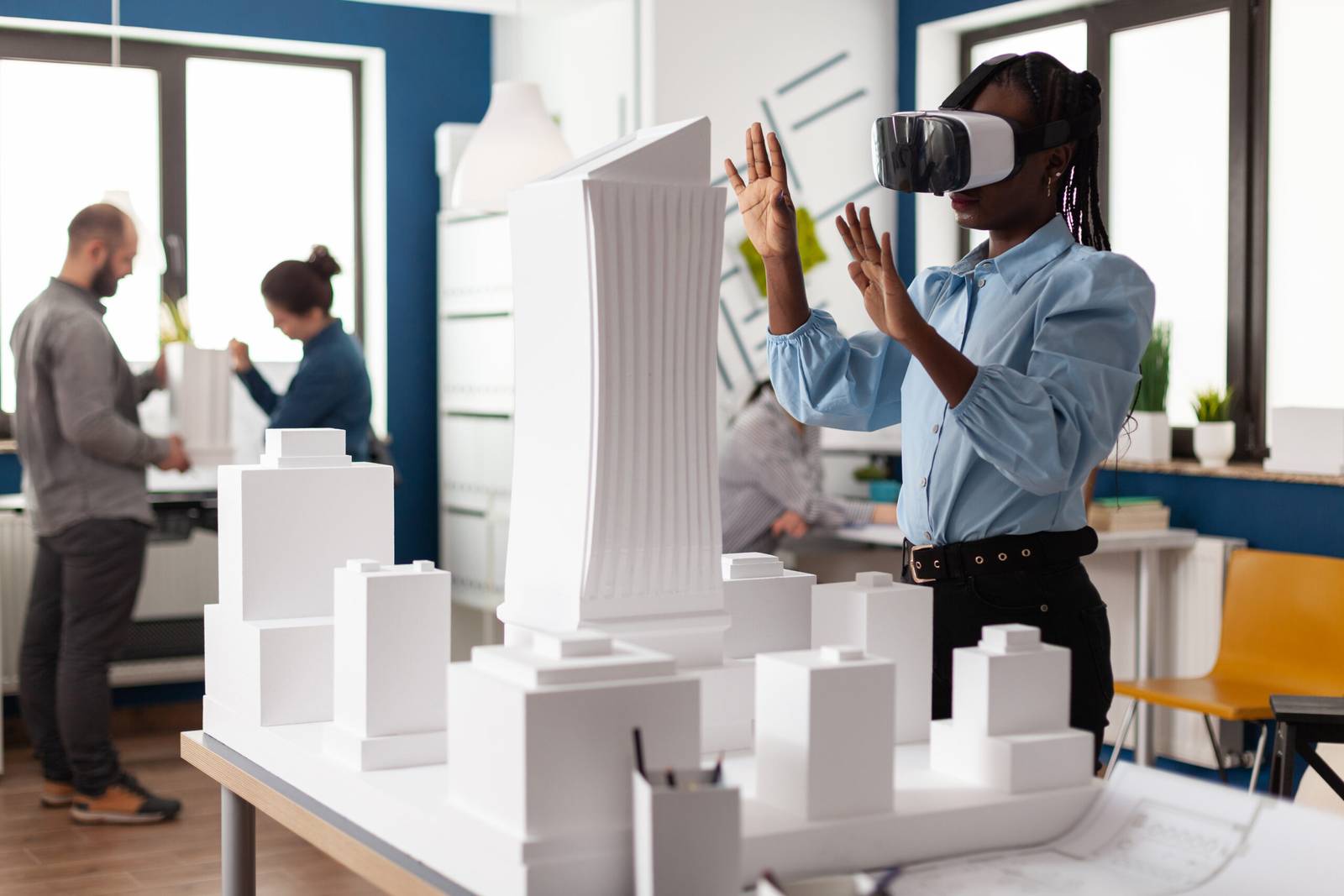Virtual Reality in Architecture and Design

by Web Digital
The world of architecture and design has been forever transformed by the advent of Virtual Reality technology. What was once confined to blueprints, physical models, and 2D renderings has now evolved into a dynamic and immersive digital realm. Virtual Reality in architecture and design offers architects, designers, and clients a new dimension of creativity, collaboration, and visualization. This article explores the profound impact of VR technology on the architecture and design industry, its applications, and the potential it holds for the future.
Immersive Design Visualization
VR technology allows architects and designers to create immersive and lifelike 3D environments for their projects. With the use of VR headsets, stakeholders can step into a digital representation of a building or space, experiencing it as if they were physically present. This level of immersion provides a much clearer understanding of design concepts, allowing for early design validation and client feedback.
Enhanced Collaboration
VR fosters collaboration among architects, designers, engineers, and clients. By sharing a VR experience, all parties involved can explore a project together, even if they are physically located in different parts of the world. This real-time collaboration streamlines decision-making, ensures everyone is on the same page, and significantly reduces the potential for misunderstandings.
Iterative Design and Prototyping
One of the significant advantages of VR in architecture and design is the ability to quickly iterate and prototype design concepts. Designers can make real-time changes to the VR model, and stakeholders can instantly see how these changes impact the space. This iterative approach allows for a more efficient design process and helps in refining the final product.
Site Analysis and Planning
VR technology can be used for site analysis and planning. Architects and urban planners can create a VR model of a specific location and assess how a proposed structure fits into the environment. This is particularly useful for understanding the impact of a building on the surroundings, including sunlight, shadow, and views, ensuring that designs are in harmony with the environment.
Interior Design and Virtual Reality Walkthroughs
Interior designers leverage VR to create realistic 3D models of interior spaces. Clients can take virtual tours of different design options, allowing them to visualize the final look and feel of a space before any construction or renovation begins. This level of detail is invaluable in ensuring client satisfaction.
Simulating Lighting and Materials
VR technology can simulate various lighting conditions, making it possible to evaluate how natural and artificial light will interact with space throughout the day and under different weather conditions. Additionally, designers can test different materials, textures, and finishes within a virtual environment, helping to make informed choices regarding aesthetics and functionality.
Accessibility and Universal Design
VR can also be used to assess accessibility and universal design principles. Designers can create simulations to test the usability of spaces for people with disabilities. This allows for the early identification of design barriers and the development of more inclusive spaces.
Client Presentations
Presenting a design concept in VR is a powerful tool for architects and designers. Clients can be fully immersed in the project, providing a level of engagement that traditional presentations cannot achieve. This immersive experience makes it easier for clients to make decisions, resulting in a more efficient design process.
Training and Education
VR technology is being used for training architects, designers, and construction professionals. It offers a safe and controlled environment for learning about design software, construction techniques, and safety protocols. This not only enhances the skills of individuals but also helps in reducing errors and improving construction quality.
Environmental Sustainability
VR can help designers and architects assess the environmental impact of their projects. By simulating energy usage, water consumption, and other environmental factors, designers can make informed decisions to create more sustainable and eco-friendly buildings and spaces.
Conclusion
Virtual Reality has undoubtedly revolutionized the architecture and design industry, offering a range of benefits that encompass design visualization, collaboration, and problem-solving. It empowers professionals to create, iterate, and present designs in an immersive and efficient manner. As technology continues to advance, we can expect VR to play an even more significant role in the design process, enabling more sustainable, accessible, and aesthetically pleasing architectural and design solutions. The integration of VR into architecture and design is not just a trend; it is a transformation that is redefining the future of the industry.
Recommended Posts

Web Design Portfolio Tips for Canadian Freelancers
September 27, 2025

The Best Email Marketing Platforms for Canadian Users
September 27, 2025

The Cost of SEO Services in Canada
September 27, 2025
